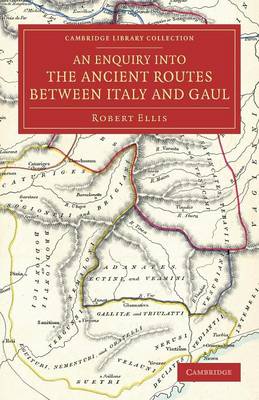Cambridge Library Collection - Classics
2 total works
The controversy over the route taken by Hannibal, the Carthaginian army and his famous elephants in their crossing of the Alps to attack Rome in 218 BCE began within fifty years of the event and has continued for many centuries. A particular scholarly dispute emerged in the 1850s between Robert Ellis (1819/20-85) and William John Law (1786-1869), and was fought in the pages of the Journal of Classical and Sacred Philology and in books. Ellis, a classical scholar, had surveyed the Alpine passes in 1852 and again in 1853, when he published this work, claiming that the Little Mount Cenis route was the one used. Law responded immediately in the Journal, and later published his own theory, to which Ellis riposted in 1867 with An Enquiry into the Ancient Routes between Italy and Gaul, also reissued in this series. Modern scholarship doubts, however, that either man was right.
The controversy over the route taken by Hannibal, the Carthaginian army and his famous elephants in their crossing of the Alps to attack Rome in 218 BCE began within fifty years of the event and has continued for many centuries. A particular scholarly dispute emerged in the 1850s between Robert Ellis (1819/20-85) and William John Law (1786-1869), and was fought in the pages of the Journal of Classical and Sacred Philology and in books. Ellis, a classical scholar, had surveyed the Alpine passes in 1852 and again in 1853, when he published his Treatise on Hannibal's Passage of the Alps (also reissued in this series), claiming that the Little Mount Cenis route was the one used. Law responded immediately in the Journal, and later published his own theory, to which Ellis riposted in 1867 with this work. Modern scholarship doubts, however, that either man was right.

